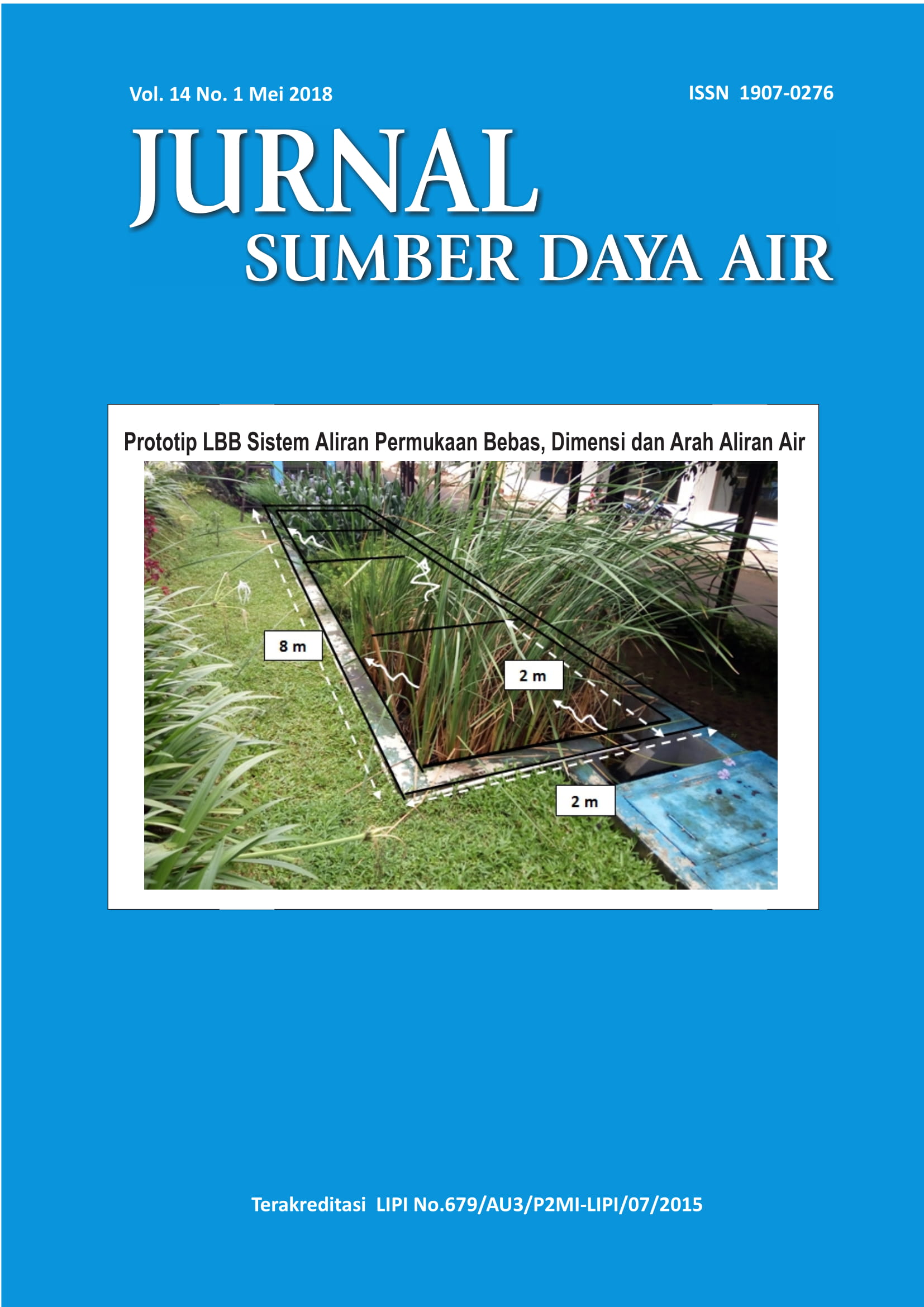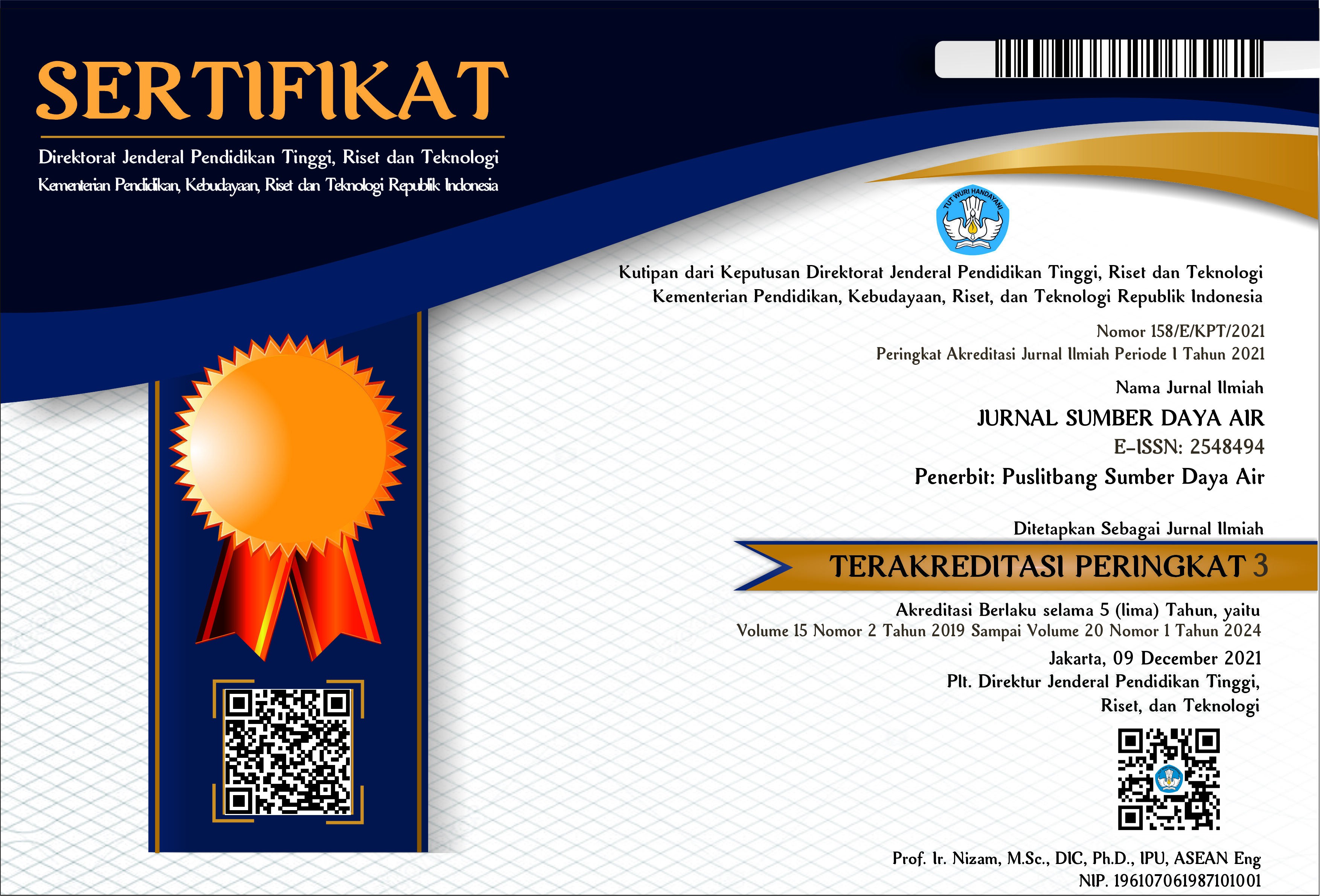Slope Stability Analysis In Caok Village Landslide, Purworejo, Central Java
DOI:
https://doi.org/10.32679/jsda.v14i1.195Keywords:
Landslide Analysis, Slope Stability, Geo-slope, PlaxisAbstract
Landslide occurred on June, 19th 2016 in Caok Village, Purworejo,Central Java. Caok Village is part of Menoreh hills area. Most of Slope in the landslide location has more than 20o. Before the landslide, rain occurred with maximum intensity 325mm/day. This is an indication that landslide was triggered by groundwater infiltration process, caused by high rainfall intensity and steep slopes. In this research, slope stability analyzed using Plaxis and Geo-slope software. Data that are soil engineering properties, steep slope, and groundwater table modelling with Plaxis and Geo-slope software to obtain slope stability and deformation. Minimum number factor of safety is 1,25 (Bowless 1984), without earthquake. Safety factor 1,162 obtained from Geo-Slope model, while with Plaxis resulted 0,9522 with maximum displacement 205m. Both the results of safety factor indicate that the location of the study are prone to landslide.
References
Badan Geologi, 1995, Peta Geologi Lembar Purworejo – Kulonprogo, Pusat Penelitian dan Pengembangan Geologi, Bandung
Baum, R. L., Savage, W. Z. dan J. W. Godt, 2008, “TRIGRS—A FORTRAN program for transient rainfall infiltration and grid‐based regional slope‐stability analysis, version 2.0”, U.S. Geological Survey
Bowles, J.E. (1985), Sifat-Sifat Fisis dan Geoteknis Tanah 2nd ed., Erlangga, Jakarta
Brunetti, M.T., S. Peruccacci S., Rossi M., Luciani S., Valigi D., Guzzetti F., 2010, “Rainfall thresholds for the possible occurrence of landGeo-slopes in Italy”, Natural Hazards and Earth Sistem Science
Collison, A.J.C. dan Anderson, M.G., 1996. Using a combined slope hydrology/slope stability model to identify suitable conditions for landGeo-slope prevention by vegetation in the humid tropics, Earth Surface Processes and Landforms, 21, h. 737-747.
https://www.esdm.go.id/assets/.../Pengenalan_Gerakan_Tanah.pdf
Fredlund, D.G. and Rahardjo, H. “Soil Mechanic for Unsaturated Soils”, John Willey & Sons, 1993
Geo-Slope International Ltd. 2012. Stability Modelling with Slope/w 2007 version-An Engineering Methodology First edition. Geo-Slope International Ltd: Canada.
Hardiyatmo, H.C., 2012, Penanganan Tanah Longsor dan Erosi, Gajah Mada University Press, Yogyakarta.
http://pusfatja.lapan.go.id/index.php/tanggapbencana/index/50 diakses 26 juni 2016
Liong G.T., Herman D.J.G., 2012. “Analisa Stabilitas Lereng Limit Equilibrium vs Finite Element Method” PIT HATTI ‐XVI 2012, Jakarta
Muntohar A.S., 2008, “Proposal Ambang Hujan untuk Peringatan Dini Tanah Longsor”, Seminar/ workshop Application Research for Disaster and Humanitarian, 19 Desember 2009, University Club UGM
Plaxis Versi 8 Manual Acuan, http: //id.scribd.com/doc/45245442/Plaxis82-Indonesian-2-Acuan-pdf#scribd, [Diakses pada 02 Juli 2017]
Rahardjo, H., Lee, T.T., Leong, E.C., dan Rezaur, R.B., 2005. Response of a residual soil slope to rainfall, Can. Geotech. J, 42, h. 340–351.
Suhendro, B., 2008, Metode Elemen Hingga dan Aplikasinya, Beta Offset, Yogyakarta.
Downloads
Published
How to Cite
Issue
Section
License
The Authors submitting a manuscript do so on the understanding that if accepted for publication, copyright of the article shall be assigned to Jurnal Sumber Daya Air and Pusat Penelitian dan Pengembangan Sumber Daya Air as publisher of the journal.Copyright encompasses exclusive rights to reproduce and deliver the article in all form and media, including reprints, photographs, microfilms and any other similar reproductions, as well as translations. The reproduction of any part of this journal, its storage in databases and its transmission by any form or media, such as electronic, electrostatic and mechanical copies, photocopies, recordings, magnetic media, etc. , will be allowed only with a written permission from Jurnal Sumber Daya Air and Pusat Penelitian dan Pengembangan Sumber Daya Air.
Jurnal Sumber Daya Air and Pusat Penelitian dan Pengembangan Sumber Daya Air, the Editors and the Advisory International Editorial Board make every effort to ensure that no wrong or misleading data, opinions or statements be published in the journal.




















